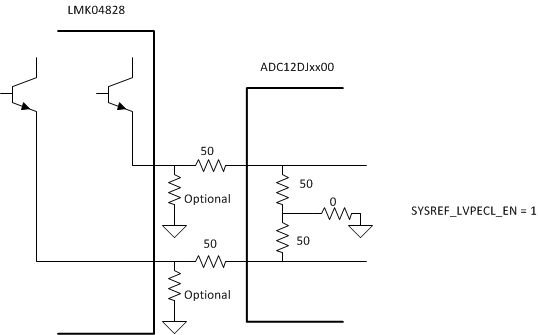Other Parts Discussed in Thread: TINA-TI, , LMK04828
Tool/software: TINA-TI or Spice Models
Dear Sirs,
I'm designing a board that uses two ADC12DL3200 connected at one FPGA Xilinx.
The FPGA downloads the data and drives the ADC12DL3200 control signals.
For example the SYSREF signal is driven by a LVDS FPAG Output.
Is it correct?
Is it possible to drive the SYSREF input signal with a LVDS driver (FPGA output)?
I'm looking forward to hearing from you.
Best Regards,
Daniele Sassaroli



